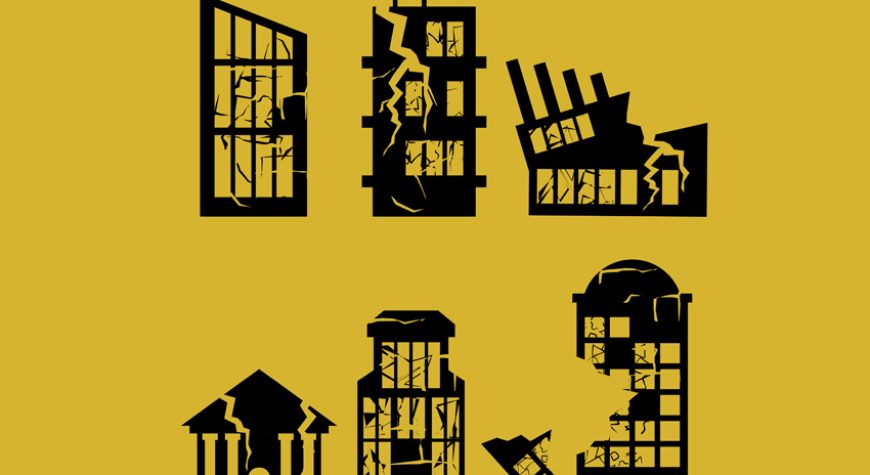
Consequences of Badly Designed Buildings
Bad design, lack of quality control and standards, cutting costs, time pressure, and negligence open up for infrastructural failures that have consequences of massive economic costs and loss of life.
What happens when construction goes cheap and cutting costs becomes the highest priority? When details aren’t paid attention to by those that are meant to check all standards of quality are met? Disaster. As economies fluctuate, material costs increase, time pressure, and negligence all come into play, societies have seen the consequences of buildings and infrastructure collapse causing massive damage.
What is Structural failure? There are different reasons why a structure may collapse or fail though usually it comes down to five main categories.
- The strength of the structure is not able to hold or support the weight/load. This can be due to its size, shape, or materials which can lead to stress beyond its critical stress level.
- The second type of failure is from fatigue or corrosion, caused by instability in the structure’s geometry, design or material properties. These failures usually begin when cracks form at stress points and grow under repeated stress and unloaded until it reaches a critical length that causes sudden fail under normal loading conditions.
- The third type of failure is caused by manufacturing errors, including improper selection of materials, incorrect sizing, improper heat treating, failing to adhere to the design, or bad workmanship. This type of failure can occur at any time and is usually unpredictable.
- The use of defective and damaged materials is another, such as concrete that has expired or been improperly stored. This type of failure is also unpredictable.
- Lack of maintenance and improper use of the structure due to lack of knowledge- for example how much weight it was designed for, or using a residential property as commercial with heavy machinery.
Here are a few examples of recent years’ structural failures; the disasters and their consequences that sparked international concern, prison sentencing, and call to stringent quality standard regulations, checks and improvements.
2017 Grenfell Tower – The 24-story high-rise tower in west London caught fire and spread incredibly fast throughout the residence building due to the type of cladding used. It had failed to comply with quality standards and previous warning signs. A flammable cladding was used during the renovation. Multiple checks had been done by quality control agents, who for some reason had cleared the illegal materials used for a building of such height.
Death toll: 79
2015 and 2017 Dubai’s Marina Tower – Within two years the 79-storey skyscraper residence building in Dubai caught fire twice. The design and structure of the building allowed firefighters to safely put out the fire and evacuate all people, however the economic cost was high and the reputation of what was once the tallest residential building was called into question. According to the fire engineering consultancy Tenable Dubai the fire along with the other blazes in the city that had happened, spread quickly because of external cladding used.
2013 Savar building collapse or Rana Plaza collapse – The structural collapse of the eight-story commercial building Rana Plaza that occurred in the Savar Upazila of Dhaka District, Bangladesh, was deemed the deadliest structural failure in modern history. It was built with substandard materials and quality standards. Murder charges were filed against 41 people and 14 cases filed for faulty design.
Injured people: 2,500, death toll: 1,134,
The direct reasons for the building problems were:
- Building built on a filled-in pond which compromised structural integrity
- Conversion from commercial use to industrial use
- Addition of three floors above the original permit
- The use of substandard construction material (which led to an overload of the building structure aggravated by vibrations due to the generators).
2007 Bridge Over Minnesota Interstate Collapse. The eight-lane interstate highway bridge, built in the 1960s, collapsed into the Mississippi River during a phase of repair. It was determined that due to a design flaw that couldn’t hold the extra weight of the concrete being added during the repair.
Death toll: 13, with an excess of 50 vehicles dropped into the river.
1995 Sampoong Department Store collapse. The five story department store in Seoul, South Korea collapsed due to a poorly built structure. An air-conditioning unit installed on a weakened roof caused damage. Cracks appeared and increased, no formal evacuation was called, and it lead to the collapse of the structure. Negligence led to a high death toll.
Death toll: 502, trapped: 1,445
